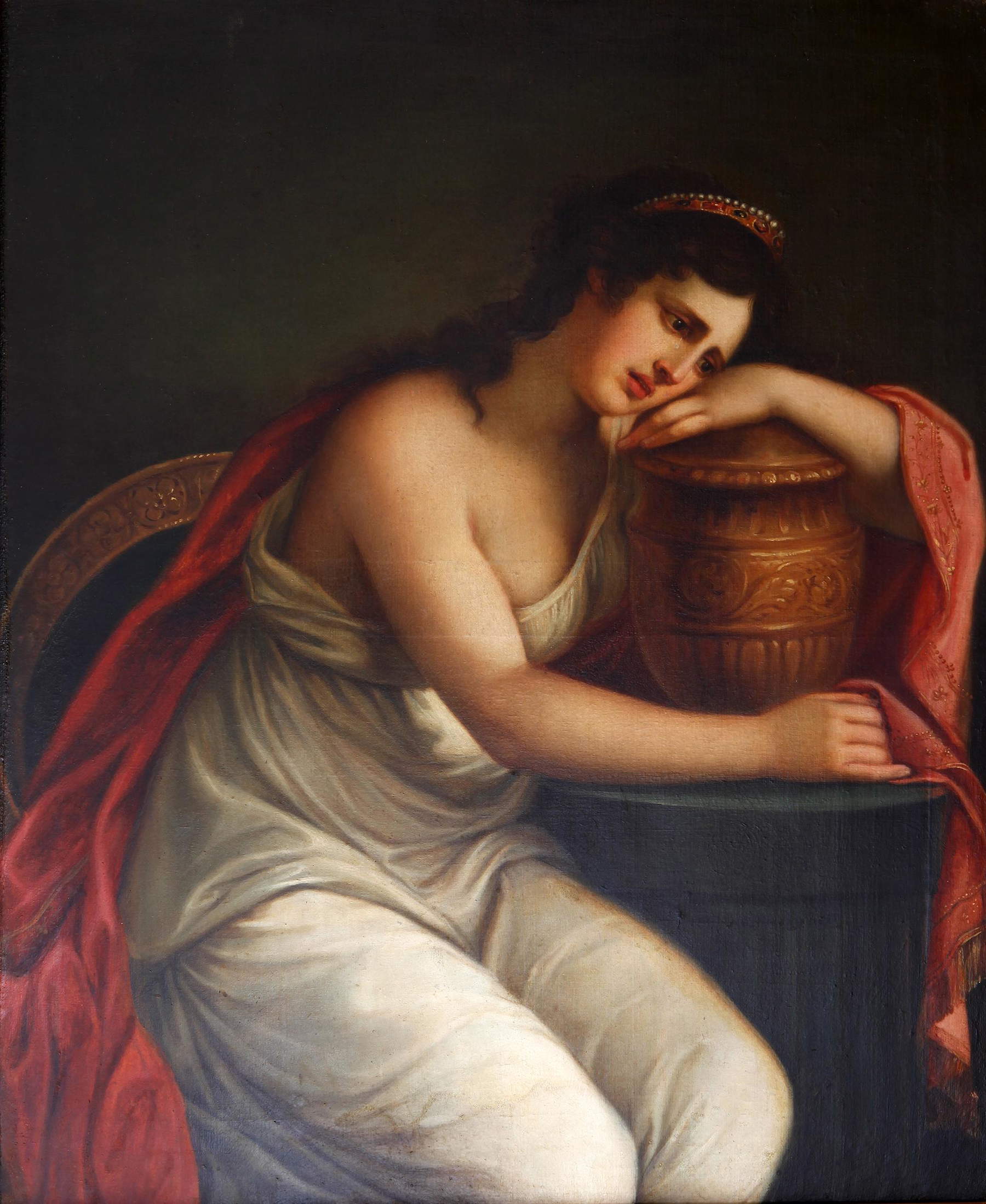The Museo Ottocento Bologna kicks off a series of monographic exhibitions on women painters from Emilia and begins with an almost forgotten figure, that of Carlotta Gargalli (Bologna, 1788 - Rome, 1840), a talented neoclassical artist who, from October 31, 2023 to January 7, 2024, is the protagonist of the exhibition Carlotta Gargalli (1788-1840). A Bolognese Painter in the Rome of Canova, curated by Ilaria Chia and Francesca Sinigaglia. The exhibition is designed to emphasize the modernity of this artist, who thanks to her talent and determination was able to establish herself in an artistic context at the time almost entirely dominated by men.
The Museo Ottocento exhibition reconstructs Carlotta Gargalli’s pictorial corpus and biographical profile, focusing on the relationship between Antonio Canova and the young men who studied at the Accademia del Regno italico at Palazzo Venezia, which he presided over, an institution that was short-lived but formed some of the most brilliant artists of the time, starting with Francisco Hayez and Tommaso Minardi. Canova’s contribution was also fundamental in launching Carlotta Gargalli’s career. It was only thanks to the interest of the great sculptor from Possagno that the painter was able to make her way in the artistic environment of the time, which nevertheless always maintained a rather hostile attitude toward her and her work.
About twenty of the Bolognese painter’s best works, as well as others by contemporary artists (some also unpublished and restored by the Museo Ottocento Bologna), from various institutions, are presented within the exhibition: Pinacoteca Nazionale di Bologna, Biblioteca comunale dell’Archiginnasio, Museo internazionale e biblioteca della musica di Bologna, MAMbo - Museo d’Arte Moderna di Bologna, Accademia di Belle Arti di Bologna, Gallerie degli Uffizi, Florence, and from private collections. These are joined by a selection of period documents on loan from the Historical Archives of the Academy of Fine Arts of Bologna. A new acquisition of the Museo Ottocento Bologna, Giambattista Bassi’s work The Garden of the Lake at Villa Borghese, will also be presented to the public for the first time on the occasion of the exhibition, which is part of the exhibition itinerary.
The program also includes several activities to delve deeper into the figure and work of the artist, such as the conference Approfondimento su Carlotta Gargalli (1788-1840) prima pittrice dell’800 scheduled for Thursday, December 14 at 4:30 p.m. (free admission without reservation) at the Museo Civico del Risorgimento (Piazza Carducci 5, Bologna) to be followed by a guided tour of the exhibition (ticket: €12 full / €10 reduced). At the Museo Ottocento Bologna there is also an educational itinerary for I and II grade secondary schools entitled Sguardi al femminile: a tale in stages from Prehistory to the 20th century to reconstruct the gazes of painters on the female universe and discover the difficulties that female artists of the past had to face in order to establish themselves in the artistic field. Admission: €5 per participant / free for accompanying teachers and children with disabilities or certified economic hardship. For information and reservations: info@mobologna.it | tel. 051 4989511 or Alice Granatiero (Head of Education) tel. 340 3457835.
The exhibition is accompanied by a bilingual (Italian/English) monograph, the first to be published on Carlotta Gargalli, edited by Ilaria Chia and Francesca Sinigaglia, with images of all the works on display, critical essays by Francesca Sinigaglia, Ilaria Chia, and Maria Romeo, and entries by Orfeo Cellura, Ilaria Chia, Federico Piscopo, and Francesca Sinigaglia. The technical-scientific committee chairing the exhibition is composed of Ilaria Chia, Vera Fortunati, Francesca Lui, Antonella Mampieri, Alfonso Panzetta and Francesca Sinigaglia.


Carlotta Gargalli was born in 1788 in Bologna, a “daughter of art”: her father was Filippo Gargalli, a skilled portrait painter with whom the young woman would begin to study. In 1804 she enrolled in courses at the Accademia di Belle Arti in Bologna, which came into being following the suppression of the Accademia Clementina. She thus turns out to be the first woman enrolled in the Academy and to attend its classes. In 1811, at the interest of Antonio Canova, she obtained the privilege, at that time unthinkable for a woman, of studying in Rome with a state grant. She remained in the eternal city until 1815, frequenting the circles of the Accademia del Regno italico (1812-1815), an institution presided over by diplomat Giuseppe Tambroni under Canova’s supervision, where the brightest artists and students from the art academies of Venice, Bologna, and Milan were gathered. Gargalli then returned to Bologna, inaugurating a period of intense work, during which he produced portraits, sacred subjects and copies of the masterpieces in the Pinacoteca Nazionale. By 1821, the year of her marriage to physician Carlo Luigi Rovinetti, Gargalli was already an established artist, so much so that she was called the “Elisabetta Sirani of our time.” In the following decades her activity slowed down, also undermined by serious family bereavements (the death of her husband and daughter), and finally ended in 1840, the year of her death. In an 1841 pamphlet, signifying the extraordinary emancipation of this woman, it is reported that the painter held a “Cabinet of paintings,” which she ran in Rome at Via del Corso 63. Carlotta Gargalli’s life was recounted in the novel “Canova’s Pupil” by Ilaria Chia, Damster Editions, 2022.
 |
| An exhibition in Bologna to rediscover Carlotta Gargalli, talented neoclassical artist |
Warning: the translation into English of the original Italian article was created using automatic tools. We undertake to review all articles, but we do not guarantee the total absence of inaccuracies in the translation due to the program. You can find the original by clicking on the ITA button. If you find any mistake,please contact us.